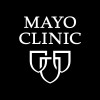Can Nebivolol Reverse Inappropriate Left Ventricular Mass in Hypertensive Patients? (Inapprop)
Hypertension

About this trial
This is an interventional treatment trial for Hypertension focused on measuring Hypertension, Left Ventricular Mass
Eligibility Criteria
All candidates must have previously untreated hypertension. The candidates will be picked from patients with stage-1 hypertension (systolic BP 140-159 mm Hg or diastolic BP 90-99 mm Hg) and those with stage-2 hypertension (systolic BP ≥160 mm Hg or diastolic BP ≥100), based on the seventh report of the Joint National Committee on Prevention, Detection, Evaluation, and Treatment of High Blood Pressure guidelines (JNC-7).
Inclusion Criteria:
- Presence of inappropriate LVM.
- Presence of phenotype of inappropriate LVM.
Exclusion Criteria:
The criteria will assure that only patients with hypertension are enrolled, that is, excluded will be subjects with systolic BP < 140 or diastolic BP < 90 (ie, prehypertension or normal BP), but without complications or any indication (or suspicion) of end-organ damage based on a physical exam, clinical history, or laboratory tests.
Specific exclusion criteria are:
- Reactive airways disease including asthma.
- Diabetes mellitus or hypoglycemia; thyrotoxicosis.
- LV dysfunction (ejection fraction < 50%) or heart failure.
- Present or previously documented coronary heart disease or angina.
- Acute myocardial infarction, or history of myocardial infarction.
- Severe bradycardia, heart block greater than first degree or sick sinus syndrome (unless a permanent pacemaker is in place).
- Hepatic insufficiency or history of cirrhosis.
- Chronic renal failure or renovascular dysfunction.
- Cerebrovascular dysfunction.
- Peripheral vascular disease.
- Pregnant or nursing women; women of childbearing age will be required to take a pregnancy test at the time of enrollment and use an acceptable method of birth control.
- Poor echo image quality.
Sites / Locations
- Mayo Clinic Arizona
Arms of the Study
Arm 1
Arm 2
Experimental
Other
Nebivolol
Metoprolol succinate
Subjects randomized to this arm will receive Nebivolol 2.5 mg once daily.
Subjects randomized to this arm will receive metoprolol succinate 50 mg once daily.
Outcomes
Primary Outcome Measures
Secondary Outcome Measures
Full Information
1. Study Identification
2. Study Status
3. Sponsor/Collaborators
4. Oversight
5. Study Description
6. Conditions and Keywords
7. Study Design
8. Arms, Groups, and Interventions
10. Eligibility
12. IPD Sharing Statement
Learn more about this trial
